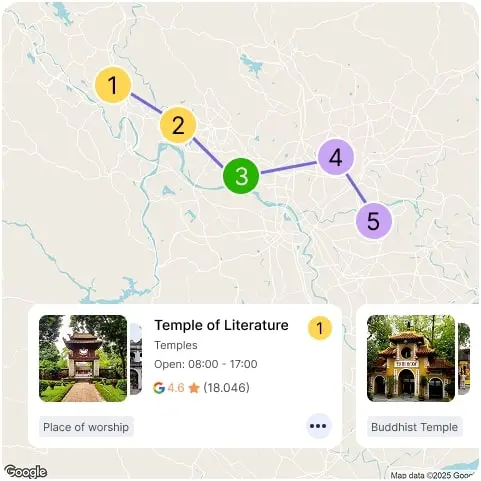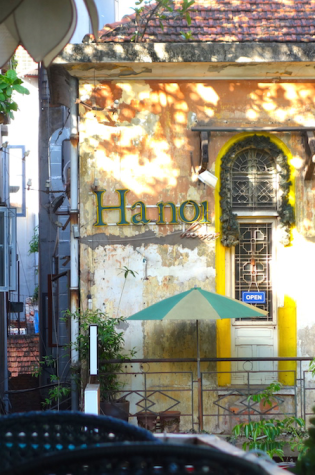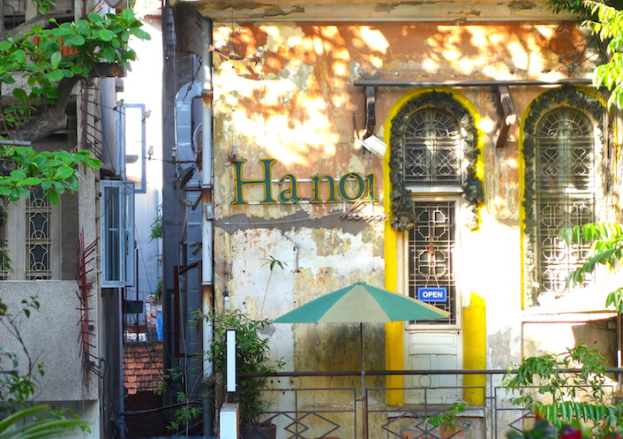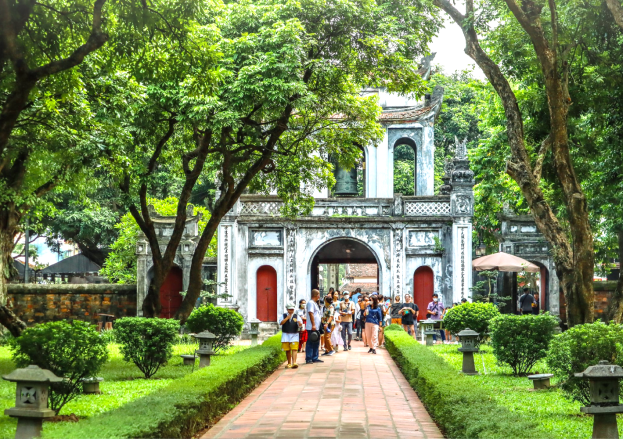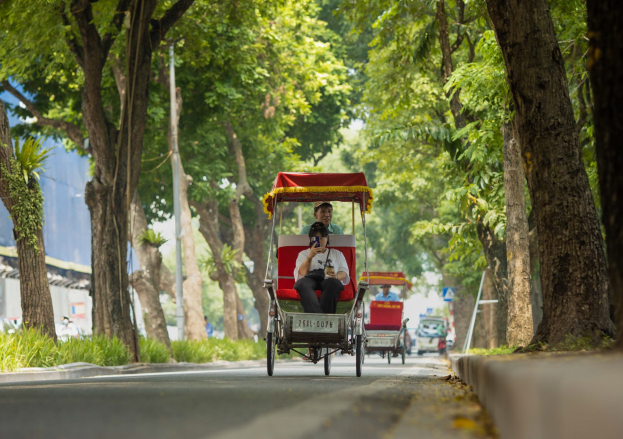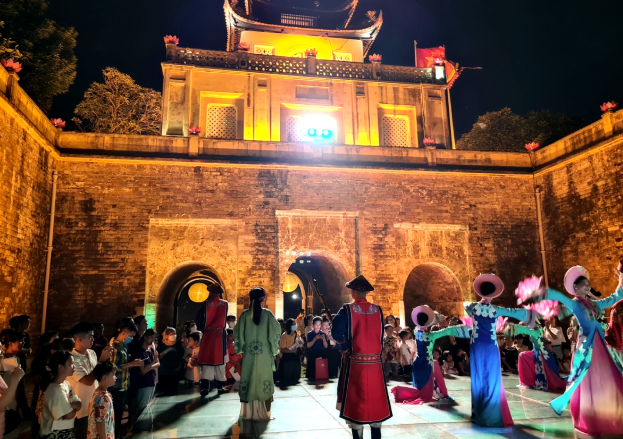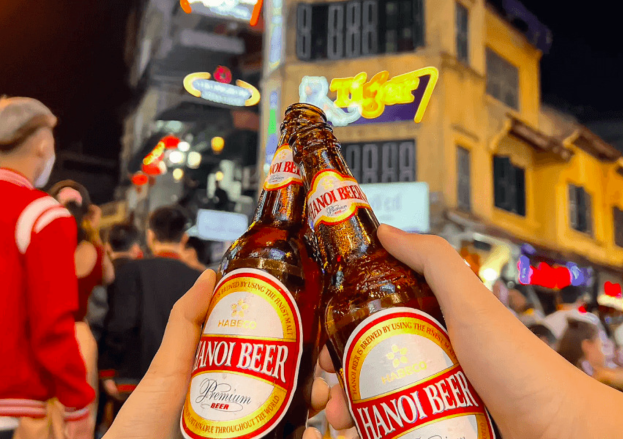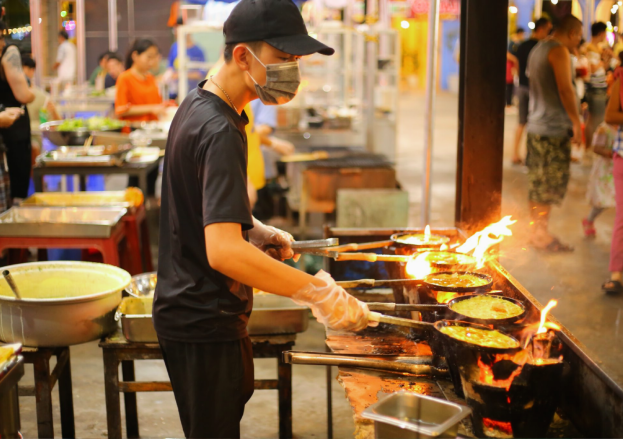
Street Food
Dive into Vietnam’s vibrant street food scene, where bustling markets and roadside stalls serve up authentic flavors. From savory snacks to iconic local dishes, street food offers a taste of daily life and culinary creativity across the country.
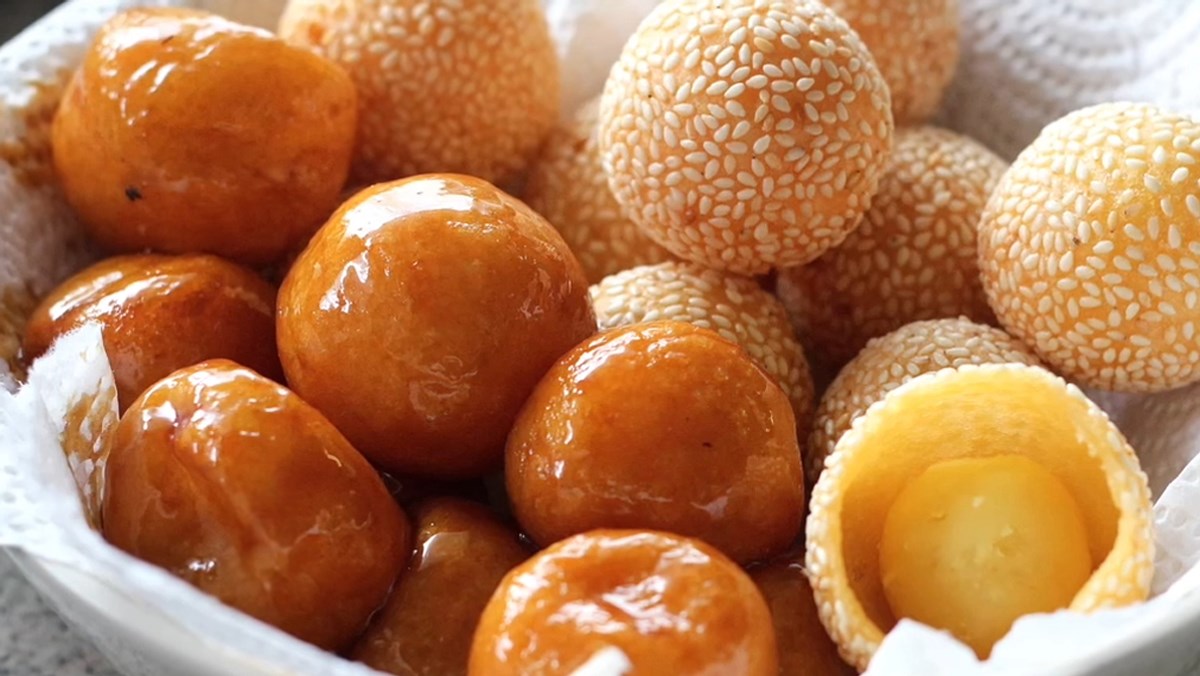
Deep-Fried Glutinous Rice Balls: Experience the sweet crunch of traditional Vietnamese
04 Sep, 2025
What is Deep-Fried Glutinous Rice Balls (“Bánh Rán”)? “Bánh rán”, literally meaning “fried cake” in Vietnamese, is a deep-fried glutinous rice ball coated in sesame seeds, with a hollow, chewy crust that delivers a delightful crunch at first bite. Depending on the region, it can be filled with sweet mung bean paste, coconut, or even left hollow to enjoy its pure texture. The combination of a crispy sesame shell and a soft, slightly sticky interior creates a contrast that makes “bánh rán” irresistible. Its flavor is light yet satisfying, making it a popular snack for both children and adults. The Symbolism Behind Deep-Fried Glutinous Rice Balls (“Bánh Rán”) More than just a snack, “bánh rán” carries cultural meaning. Its round golden shape is associated with fullness, prosperity, and happiness. Traditionally, it was enjoyed during festive occasions or as a treat for family gatherings. Today, you’ll find it being sold on street corners, in morning markets, and even at tea shops as a nostalgic comfort food. In northern Vietnam, “bánh rán” is especially linked to childhood memories, where vendors would sell hot sesame balls to schoolchildren during break times. In southern Vietnam, the treat is often called bánh cam and comes with slight variations in texture and sweetness, but the essence remains the same. How Deep-Fried Glutinous Rice Balls are Made? Crafting “bánh rán” is a meticulous process that combines skill, patience, and attention to detail to create the perfect balance of crispiness and chewiness. The Dough – The base is made from glutinous rice flour, which gives the roll its signature chewiness. In some recipes, a small portion of regular rice flour is added to enhance crispiness. Water and a pinch of salt are mixed in to create a smooth, pliable dough that can be easily shaped into balls. The Filling – Traditionally, the filling consists of sweetened mung bean paste, often flavored with coconut, pandan leaves, or a hint of vanilla. The paste is cooked until smooth and firm enough to hold its shape inside the delicate rice shell. In some regional versions, fillings may include sweetened taro, red bean, or even chocolate for modern twists. The Coating – Each dough ball is carefully rolled in white or black sesame seeds, which provide a nutty aroma and a crunchy texture once fried. The coating also gives “bánh rán” its signature golden appearance. The Frying – Deep-frying is done slowly over medium heat. This ensures the outer crust puffs up and turns golden brown without burning, while the inside remains light, chewy, and flavorful. F Variations of “Bánh Rán” Over time, “bánh rán” has evolved into a variety of styles, each reflecting regional tastes and creative innovations. From the classic northern and southern versions to modern interpretations, there is a version to suit every palate: Northern Style (Hà Nội): These are typically smaller and filled with lightly sweetened mung bean paste. After frying, they are often coated with a thin sugar syrup, adding a subtle glaze and extra sweetness. The result is a delicate, fragrant treat that is crunchy outside yet soft inside. Southern Style (Bánh cam): Usually slightly larger, these may omit the sugar glaze and sometimes include shredded coconut mixed into the mung bean filling, giving it a richer, more textured bite. The crust is thicker and crunchier, making it a hearty snack loved by locals. Modern Versions: Contemporary bakers and street vendors have introduced creative variations, such as fillings with chocolate, taro, red bean, or even pandan custard. These modern twists maintain the traditional exterior but offer new flavors for adventurous palates, blending tradition with innovation. If you’re exploring Vietnam, don’t miss the chance to experience the sweet crunch of “bánh rán”. Whether you try it from a bustling street vendor in Hanoi or enjoy a modern version in a stylish café, each bite will give you a taste of tradition, nostalgia, and local flavor. So next time you wander through a Vietnamese market, follow the inviting aroma of fried sesame and treat yourself to this golden delight—it’s the perfect balance of crispy, chewy, and sweet that defines Vietnamese snacks.
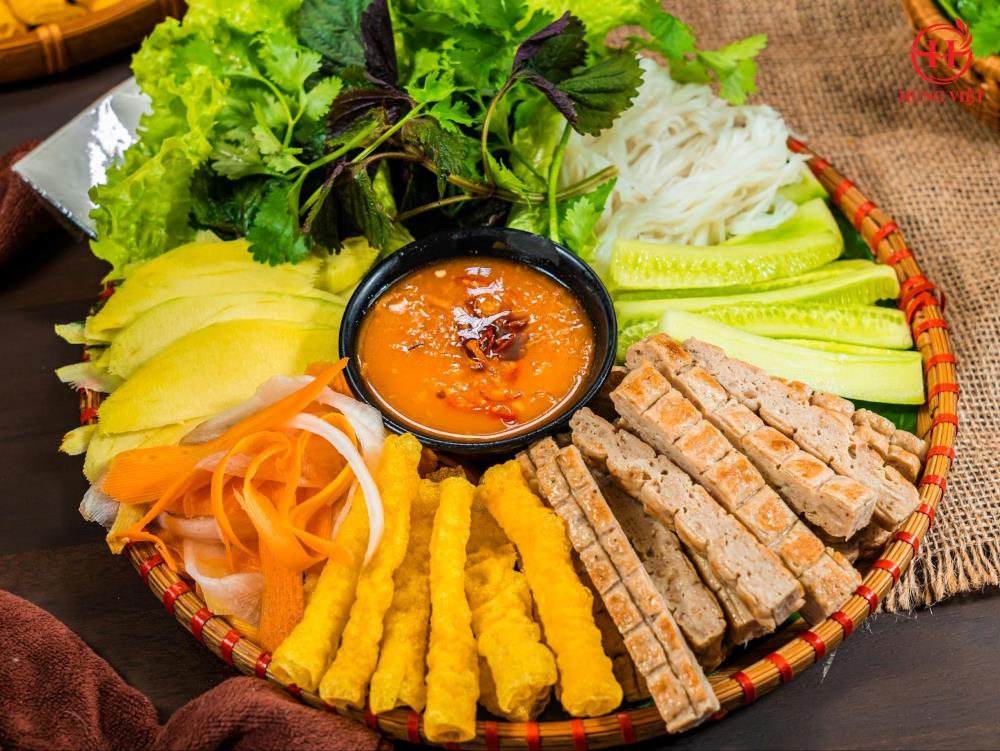
Taste the flavorful Vietnamese "Nem nướng" street food
04 Sep, 2025
What is "Nem Nướng"? "Nem nướng", literally translated as “grilled sausage,” is a beloved Vietnamese specialty that has captivated food lovers for generations. At its core, it is made from finely ground pork mixed with garlic, shallots, fish sauce, and a hint of sugar, creating a perfectly seasoned balance of savory and slightly sweet notes. The meat mixture is carefully shaped into skewers or patties, then grilled over glowing charcoal until golden brown. What sets "nem nướng" apart is the way it absorbs the smoky aroma from the grill while keeping its inside juicy and tender. With every bite, diners can taste layers of flavors: the richness of the pork, the mild sweetness of sugar, the umami depth of fish sauce, and the irresistible smokiness from charcoal fire. It is simple yet incredibly flavorful—a true reflection of Vietnamese culinary ingenuity. How "Nem Nướng" is Traditionally Served The joy of "nem nướng" does not stop at the grilled sausage itself—it comes alive when paired with an array of accompaniments, transforming it into a vibrant and interactive meal. A typical serving includes: Rice paper: Thin, translucent sheets used as the base for wrapping. Fresh herbs: Mint, basil, perilla leaves, lettuce, and coriander that add fragrance and a refreshing contrast to the grilled meat. Pickled vegetables: Green papaya, carrots, or radishes, pickled lightly in vinegar, lending a tangy crunch that balances the richness of the pork. Cucumber and green banana: Crisp and slightly bitter, offering yet another layer of texture and taste. Crispy rice crackers: A crunchy surprise hidden inside the roll, making every bite more exciting. The highlight of the meal is undoubtedly the dipping sauce. Unlike the familiar nước chấm used for many Vietnamese dishes, the "nem nướng" sauce is more complex and hearty. Made from pork liver, ground peanuts, sesame seeds, garlic, and fermented soybeans, it is simmered until thick and velvety. The sauce is nutty, savory, slightly sweet, and deeply aromatic, serving as the perfect complement to the freshness of the roll. The Art of Eating "Nem Nướng" Eating "nem nướng" is not just a meal—it is a culinary ritual. Diners are encouraged to assemble their own rolls, combining ingredients to their liking. The process usually unfolds like this: Take a sheet of rice paper and moisten it slightly to make it pliable. Lay down a leaf of lettuce as the foundation. Add herbs, slices of pickled vegetables, cucumber, and a piece of crispy rice cracker. Place a piece of juicy grilled sausage on top. Roll everything tightly into a neat cylinder. Dip it generously into the rich, nutty sauce. The result is an explosion of flavors—smoky meat balanced by crisp vegetables, aromatic herbs, and the deep complexity of the sauce. It’s a sensory experience that combines taste, texture, and even sound, thanks to the crunch of the rice cracker. Where to Find the Best "Nem Nướng" Vietnam is filled with local variations of "nem nướng", but certain destinations are especially famous: Nha Trang: Considered the birthplace of "nem nướng", this coastal city offers the most authentic experience. Street stalls here are always crowded with locals and travelers eager for freshly grilled sausages and the city’s signature dipping sauce. Da Lat: In this cool highland city, "nem nướng" is paired with an abundance of fresh vegetables grown locally, giving the dish a uniquely refreshing character. Saigon and Hanoi: While not traditional homes of the dish, both cities have embraced it wholeheartedly. From humble street vendors to trendy restaurants, you’ll find countless versions adapted to urban tastes. For food lovers and adventurous travelers, tasting "nem nướng" is a journey into the very soul of Vietnamese street food culture. It’s not only about savoring the grilled pork but also about participating in a shared experience—wrapping, dipping, and eating together. Each bite carries the essence of Vietnamese tradition: a love for fresh ingredients, a respect for balance, and the joy of sharing food with others.

Discover the traditional Vietnamese Dish "Bánh Cuốn"
04 Sep, 2025
What is “Bánh Cuốn”? “Bánh cuốn” is a type of steamed rice roll, made from a thin, soft sheet of rice batter. These delicate sheets are carefully steamed until translucent and tender, then rolled around a filling of ground pork, minced mushrooms, and shallots. The result is a light, flavorful, and slightly chewy roll that is both satisfying and easy to enjoy at any time of the day. The dish is typically served with a topping of crispy fried shallots, which add a contrasting crunch and aromatic depth. A side of nước mắm (Vietnamese fish sauce) provides a balance of salty, sweet, and tangy flavors that enhances the natural taste of the rolls. In some regions, “bánh cuốn” may also include pâté, sliced Vietnamese sausage, or other local additions, adding richness and variety to each bite. What makes “bánh cuốn” special is not just the ingredients, but the careful preparation process. The thin rice sheets require skill to steam perfectly, and the rolls must be assembled with precision to maintain their delicate texture. It is a dish that embodies Vietnamese culinary artistry, patience, and tradition. The Experience of Eating “Bánh Cuốn” Eating “bánh cuốn” is not just about flavor—it is an experience of textures and aromas. The delicate rice roll contrasts beautifully with the crispiness of fried shallots, while the dipping sauce adds a perfect balance of salty, sweet, and tangy notes. “Bánh cuốn” is most commonly enjoyed at street-side stalls, small local eateries, or bustling markets, where the air is filled with the aroma of steaming rice and sizzling shallots. Watching vendors prepare the rolls is part of the charm. Skilled hands spread the rice batter on the cloth, steam it to perfection, add the filling, and carefully roll each piece before serving it fresh to the customer. This live preparation not only guarantees freshness but also provides an immersive insight into Vietnamese food culture and street food traditions. For travelers, trying “bánh cuốn” at these locations is an opportunity to see culinary techniques in action, interact with locals, and enjoy a meal that has been perfected over generations. The experience is intimate, flavorful, and deeply connected to Vietnamese daily life, making it a must-try dish for anyone exploring the country’s cuisine. Tips for Trying “Bánh Cuốn” To fully enjoy “bánh cuốn” and appreciate its delicate flavors and cultural significance, here are some helpful tips for first-time tasters and food enthusiasts alike. Eat it fresh: The rolls are best enjoyed immediately after steaming, while still warm and tender. Don’t skip the sauce: Nước mắm adds a crucial layer of flavor, balancing the subtle taste of the rice rolls. Pair with fresh herbs: Mint, cilantro, and Vietnamese coriander enhance the flavor and freshness. Try regional variations: Northern and Southern versions may differ in fillings and accompaniments, so sampling both can broaden your culinary experience. Observe the preparation: Watching the vendors steam, fill, and roll the “bánh cuốn” provides insight into the artistry and tradition behind this dish. “Bánh cuốn” is more than just a meal; it is a symbol of Vietnamese culinary heritage. Each bite reflects a blend of skill, tradition, and fresh ingredients, making it a dish that is loved by locals and admired by travelers alike. Whether enjoyed as a street food snack or a breakfast delicacy, “bánh cuốn” offers a taste of Vietnam’s culture, history, and passion for food. For travelers exploring Vietnamese cuisine, “bánh cuốn” is a must-try dish, offering both flavor and an authentic cultural experience that lingers long after the last bite.

Uncover Vietnamese street food culture with Vietnamese pizza Banh Trang Nuong
04 Sep, 2025
What is Banh Trang Nuong? Banh Trang Nuong is a crispy Vietnamese rice paper snack that has earned the nickname “Vietnamese pizza” because of its flat, round shape and diverse toppings. Traditionally, the rice paper is grilled over hot charcoal or an open flame until it turns golden, crackling with a satisfying crunch. Unlike Western pizza, the toppings on banh trang nuong are a creative combination of local ingredients, reflecting the inventiveness of Vietnamese street food culture. Popular additions include quail eggs, dried shrimp, pork floss, chopped green onions, chili sauce, and a drizzle of mayonnaise. Together, these ingredients create a rich, savory, slightly spicy, and aromatic flavor that awakens the senses with every bite. In some areas, vendors add cheese, sausage, or other unique ingredients, offering playful twists while maintaining the authentic street food vibe. Despite its simplicity, banh trang nuong delivers a complex flavor and texture profile. The crisp rice paper provides a delicate crunch that contrasts beautifully with the soft egg, chewy dried shrimp, and tender pork floss. It is portable, easy to eat on the go, and highly satisfying, making it a staple at night markets, street corners, and local food stalls. This snack is not just food; it is an example of Vietnamese culinary ingenuity, showing how basic ingredients can be transformed into something memorable, flavorful, and culturally significant. Every bite tells a story of street food tradition, local creativity, and communal enjoyment, offering travelers a delicious gateway into Vietnam’s vibrant culinary world. The Street Food Experience One of the best ways to enjoy bánh tráng nướng is directly at a street stall, watching it being prepared. Vendors spread the rice paper on a small grill, add the toppings with precision, and cook it until it reaches the perfect crispness. The aroma of grilled rice paper mixed with sizzling eggs, savory meat, and spices fills the air, instantly drawing a crowd. Eating bánh tráng nướng is as much about the atmosphere as the taste. Street stalls are social hubs where locals gather after work or school, chatting, laughing, and sharing this beloved snack. Travelers are encouraged to join in, enjoying the casual, lively environment while trying one of the most iconic examples of Vietnamese street food culture. Tips for Trying Banh Trang Nuong To truly enjoy banh trang nuong like a local and make the most of this iconic street food, here are some helpful tips to guide your tasting adventure: Try different variations: Each vendor has their own style, so sampling a few versions can give you a full experience. Eat it fresh: Bánh tráng nướng is best enjoyed hot off the grill, when it’s still crispy. Ask for recommendations: Locals often know the best stalls that produce the perfect combination of crispiness and flavor. Pair with a drink: A cold soda or iced tea complements the savory and spicy toppings. Observe and learn: Watch how the vendor layers the toppings—it’s part of the charm and culture of Vietnamese street food. Banh trang nuong is not just a tasty treat; it is a window into Vietnamese creativity and street food culture. Each piece tells a story of local ingenuity, resourcefulness, and flavor mastery. From bustling streets in Ho Chi Minh City to the night markets of Da Nang, this snack represents the heart of Vietnamese culinary life: accessible, flavorful, and deeply rooted in tradition. For travelers seeking to uncover the essence of Vietnam’s street food culture, bánh tráng nướng offers both adventure and delight in every crispy bite. It is more than food—it is a cultural experience that leaves a lasting impression of Vietnam’s vibrant streets and innovative cuisine.
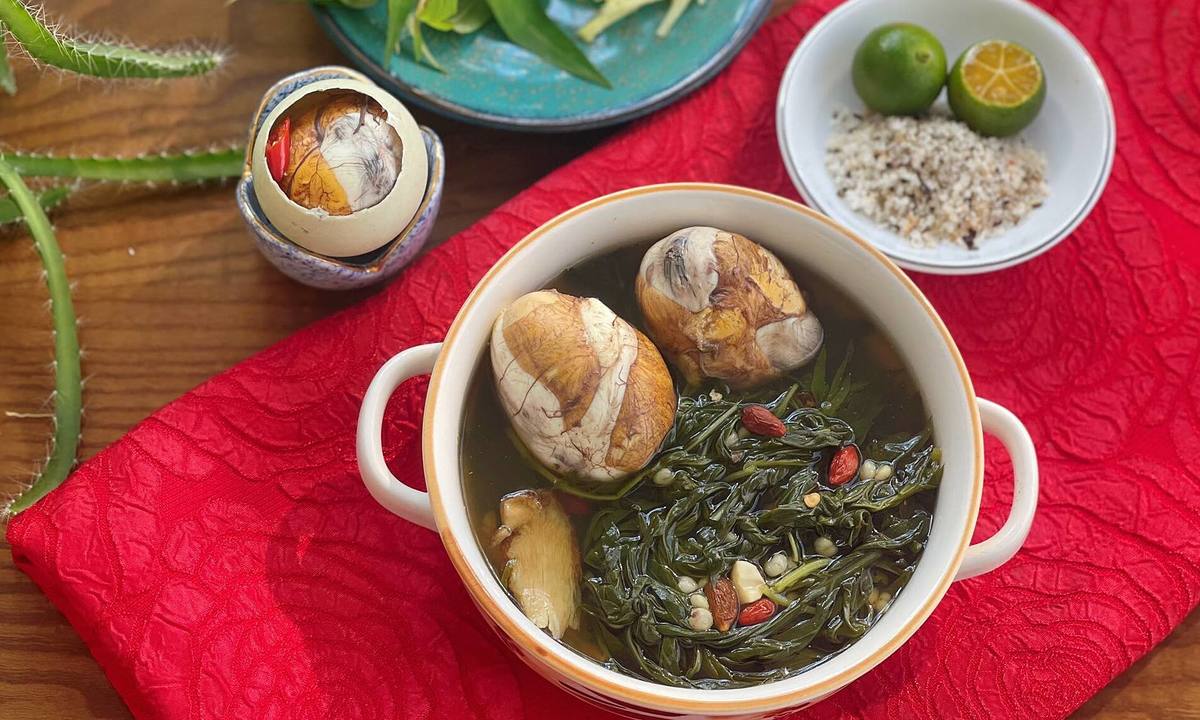
Enjoy Vietnams Balut in the way locals do
04 Sep, 2025
What is Balut? Balut, known in Vietnamese as "trứng vịt lộn", is a fertilized duck egg that has been carefully incubated for about 17 to 21 days. Inside the egg, you will find a partially developed duck embryo along with a rich, savory yolk. The combination of textures—from the tender embryo to the creamy yolk—creates a flavor that is both unique and deeply satisfying. Traditionally, balut is served warm, often straight from a steaming pot. It is commonly accompanied by fresh herbs, a sprinkle of salt, cracked pepper, and sometimes a dash of chili or a squeeze of lime juice, which enhance its flavor and balance the richness. For first-time international visitors, the appearance of balut can be surprising or even intimidating, but locals regard it as a nutritious snack packed with protein and essential nutrients, and it has been a cherished delicacy in Vietnam for generations. Balut is not merely food; it represents history, tradition, and ingenuity, reflecting how Vietnamese street food turns simple ingredients into a culturally significant and beloved treat. The Local Way to Enjoy Balut Eating balut in Vietnam is as much about the experience and social interaction as it is about taste. Street vendors often cook the eggs on the spot, keeping them warm and ready for customers. Locals have their own ways of enjoying the dish: a pinch of salt and pepper, a squeeze of lime, and a few fresh leaves of rau răm (Vietnamese coriander) elevate the flavor, while some adventurous eaters mix in chili and lime juice for a sharper, spicier taste. Balut is eaten slowly and mindfully, allowing the eater to fully appreciate the textures and flavors. It is often shared among friends or enjoyed while chatting with fellow street-goers. Observing locals as they peel the egg, sip the broth inside, and savor each bite gives insight into Vietnamese culture—it is a ritual of enjoyment, patience, and communal experience. This dish is more than a simple snack; it is a window into the everyday life and traditions of Vietnam. The care and attention that go into cooking and eating balut highlight the country’s respect for flavor, nutrition, and social connection. For travelers, taking the time to enjoy balut the local way is not just about tasting something unusual—it is about immersing oneself in a centuries-old culinary tradition. Tips for First-Time Tryers Start with small portions: Many street vendors sell balut individually, perfect for a first taste. Observe the locals: See how they peel and season the egg to understand the best way to enjoy it. Pair with herbs and seasonings: Don’t skip the lime, salt, pepper, and rau răm—they balance the flavors. Keep an open mind: Part of the experience is embracing a dish that is new and unusual. Enjoy the moment: Eat it slowly, watch the bustling street, and immerse yourself in the local culture. Balut is not just a snack; it is a cultural experience. Eating it allows travelers to connect with local traditions, observe the rhythms of daily life, and understand the Vietnamese approach to street food. It is an adventure for the senses - aromatic, savory, and slightly daring and a way to appreciate the diversity of Vietnam’s culinary landscape. For travelers willing to step out of their comfort zone, balut offers a memorable and authentic taste of Vietnam. Whether you enjoy it quietly at a street-side stall or share the experience with new friends, eating balut like the locals provides a story to take home long after the last bite.
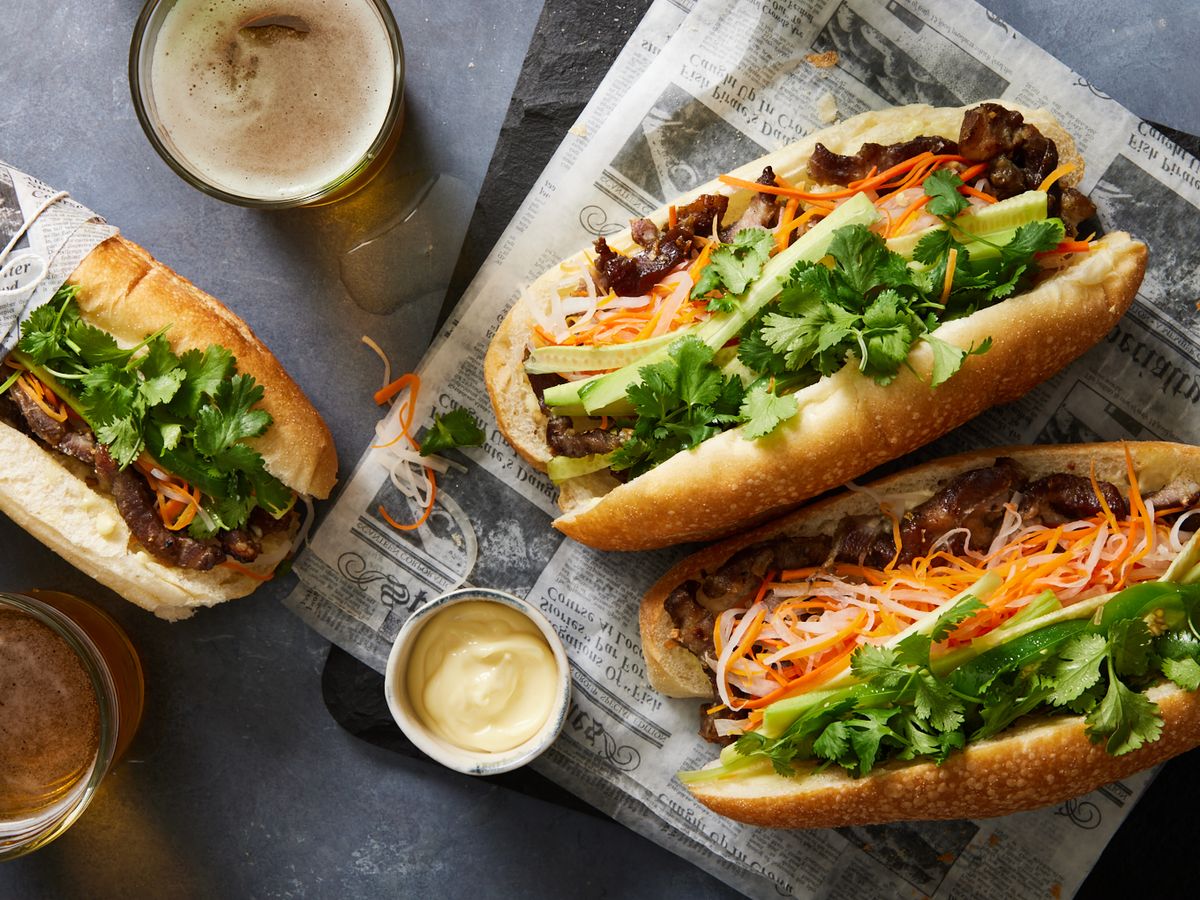
Taste the flavors of Vietnam through its famous "Bánh mì"
04 Sep, 2025
A Perfect Blend of East and West Bánh mì originated during the French colonial period when the French introduced the baguette to Vietnam. Over time, Vietnamese cooks transformed it into a unique creation, blending French bread with local ingredients. The result is a crispy, airy baguette filled with a combination of grilled meats, pate, pickled vegetables, fresh herbs, and chili sauce. This fusion of textures and flavors—crunchy, soft, savory, tangy, and spicy—makes bánh mì a culinary experience unlike any other. Each region in Vietnam has its own version of bánh mì. In Saigon, you might find a rich combination of pork, pate, and fresh vegetables. In Hanoi, the bánh mì tends to be lighter, often filled with cold cuts and simple pickled vegetables. No matter the variation, every bánh mì reflects the ingenuity of Vietnamese street food culture. The Street Food Experience One of the best ways to experience bánh mì is to wander through Vietnam’s bustling streets and watch it being made fresh in front of you. Vendors often bake their baguettes daily, grill the meat on small charcoal stoves, and prepare pickled vegetables and herbs with care. Watching the sandwich come together—crisp bread sliced open, slathered with savory spreads, and piled with fresh ingredients—is a feast for the senses even before taking the first bite. Bánh mì is not just about taste; it is about community and daily life. Street vendors call out to passersby, offering hot, freshly made sandwiches, while locals queue up for their morning or lunchtime fix. Sharing a bánh mì is sharing a piece of Vietnamese culture—a simple meal that brings people together in the streets of Hanoi, Ho Chi Minh City, or small towns across the country. Tips for Enjoying Bánh Mì Try different fillings: Pork, chicken, beef, pate, or vegetarian options offer distinct flavor experiences. Look for fresh baguettes: The crispness of the bread makes all the difference. Don’t skip the herbs and pickles: They balance the savory flavors and add freshness. Eat on the go: Bánh mì is designed to be a quick, satisfying street food meal—grab one and enjoy it while exploring. Ask locals for recommendations: Some of the best bánh mì spots are hidden gems known only to residents. Bánh mì is more than just a sandwich; it is a gateway to Vietnamese flavors and culture. From its colonial roots to the bustling street corners of modern cities, every bite combines history, tradition, and innovation. Whether you are a first-time visitor or a seasoned traveler, tasting bánh mì offers a delicious way to experience the heart of Vietnam, one crunchy, flavorful bite at a time.
Experiences & Activities

Nha Trang Half-Day Snorkeling Adventure with BBQ Onboard
1 day
Relax at Vung Tau Beach Visit Christ the King Statue Explore Whale Temple (Den Ca Ong) Discover the historic White Palace (Bach Dinh) Admire the panoramic sea view at Nghinh Phong Cape

A romantic & adventurous Vietnam journey in 10 days 9 nights
10 days 9 nights
Embark on a captivating 10-day odyssey through Vietnam, perfectly curated for couples seeking both profound cultural immersion and exhilarating adventure. This journey weaves together the ancient charm of Hanoi with the mystical karst landscapes of Halong Bay, offering an overnight cruise under a starlit sky. Discover the imperial grandeur of Hue and the timeless allure of Hoi An, where lantern-lit nights and riverside tranquility set the scene for romance. Venture into the vibrant Mekong Delta, exploring its floating markets and lush waterways. Throughout your trip, you'll experience Vietnam's diverse beauty, from serene sunrises to thrilling activities, creating cherished memories that celebrate your love amidst breathtaking backdrops. This is more than a tour; it's a shared adventure into the heart and soul of Vietnam.

5D4N_HANOI – HALONG ON CRUISE EXPLORATION
5 days 4 nights
Spend 2 days cruising around Halong Bay, Lan Ha Bay or Bai Tu Long Bay. Highlights include Sung Sot Cave and Titop Island for Halong, Cat Ba Island and Dark and Bright Cave for Lan Ha, and Thien Cahn Son Cave and Vung Vien Floating Village for Bai Tu Long. Tour includes accommodation at different luxury levels, meals, activities and round-trip transfers from Hanoi. Overnight cruise around Halong, Lan Ha or Bai Tu Long bay Stay in an air-conditioned cabin with private bathroom Boats and accommodations range from three to five stars Activities can include kayaking, bamboo boat, cooking and tai chi

Highlight North Vietnam 7 days adventure
7 days 6 nights
Are you looking for a destination that’s equal parts adventure, culture, and jaw-dropping scenery? Immerse yourself in breathtaking landscapes, rich history, and culinary delights by getting ready for an unforgettable journey through Highlight North Vietnam 7-Day Adventure. From Hanoi’s bustling streets, the misty town of Sapa to Ninh Binh’s ancient land and natural wonder of Halong bay. This 7-day itinerary is crafted for those seeking adventure, culture, and relaxation. Dive into local experiences, scenic landscapes, and heart of Vietnamese culture!
![[S.I.C] Yen Duc village overnight: 2 day 1 night](https://ilooca-tourdb.itourism.vn//files/thumb/408/285/uploads/content/Yen-Duc-Village-Vietnamese-Local-Life_9_2017_03-770x513_1.jpg)
[S.I.C] Yen Duc village overnight: 2 day 1 night
2 days 1 night
This 2 day 1 night trip includes a nice stay in Viet House, unique village retreat accommodation, surrounded by rice fields in Yen Duc village. Cycling to discover peaceful village, talking with local people and visit their family house should amaze you with lots of cultural sense and fun. Besides that, joining local activities (fishing, gardening, visiting the culture house of village, local market…) bring you close to real experience of a farmers, taste delicious homemade Vietnamese food then enjoy peaceful life in countryside of Vietnam.

The perfect 3-day Sapa itinerary for first-timers
3 days 2 nights
Prepare to be captivated by a journey where mist-shrouded peaks meet vibrant cultural tapestries. This 3-day, 2-night escape from Hanoi plunges you into the heart of Sapa's unparalleled beauty. Imagine tracing the contours of iconic terraced rice fields, a masterpiece sculpted by generations, and breathing in the crisp mountain air. Beyond the breathtaking panoramas, you'll connect intimately with the resilient ethnic minorities – the H'Mong people – in their traditional villages, witnessing ancient customs and intricate handicrafts firsthand. For the ultimate perspective, an optional ascent to Fansipan, "The Roof of Indochina," offers a spectacular vista where clouds dance below your feet. This isn't just a tour; it's an immersive odyssey into the soul of Vietnam's highlands, promising memories that will linger long after you return.
Keep exploring
Top things to do in Street Food
FAQs
